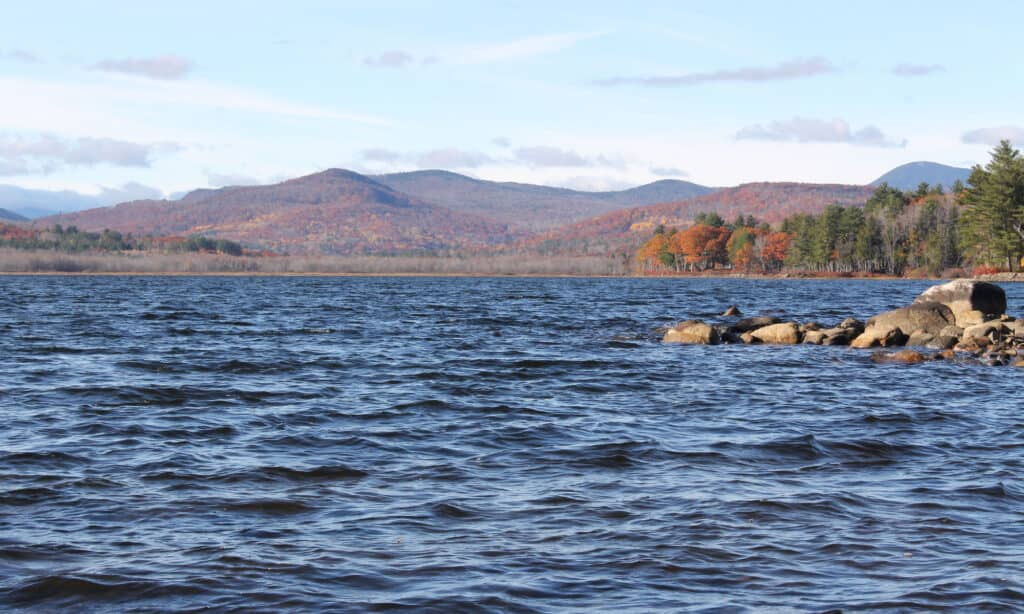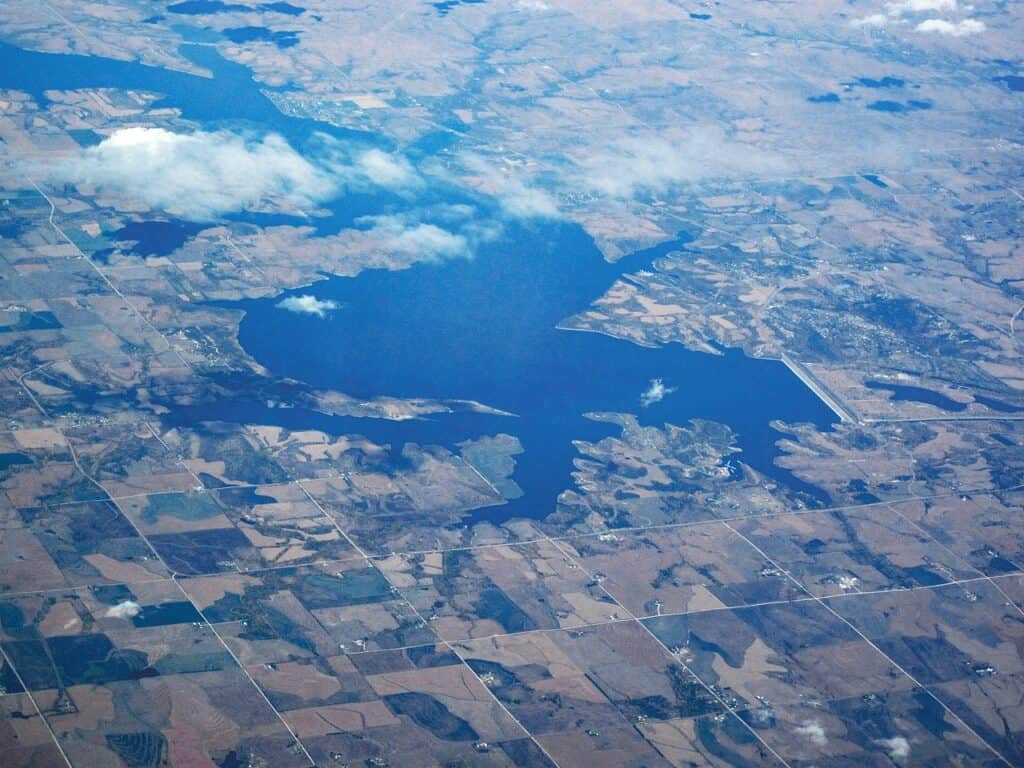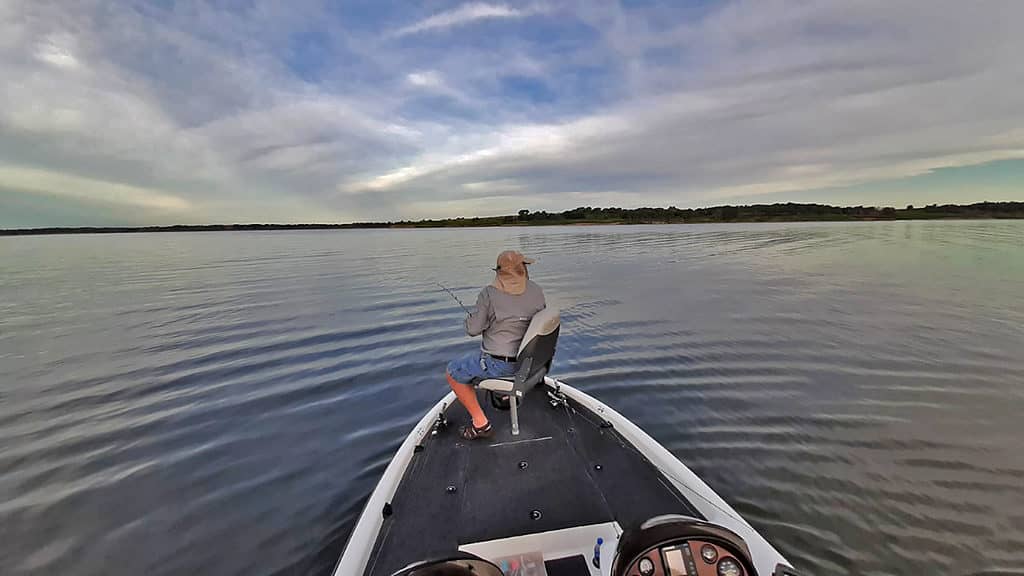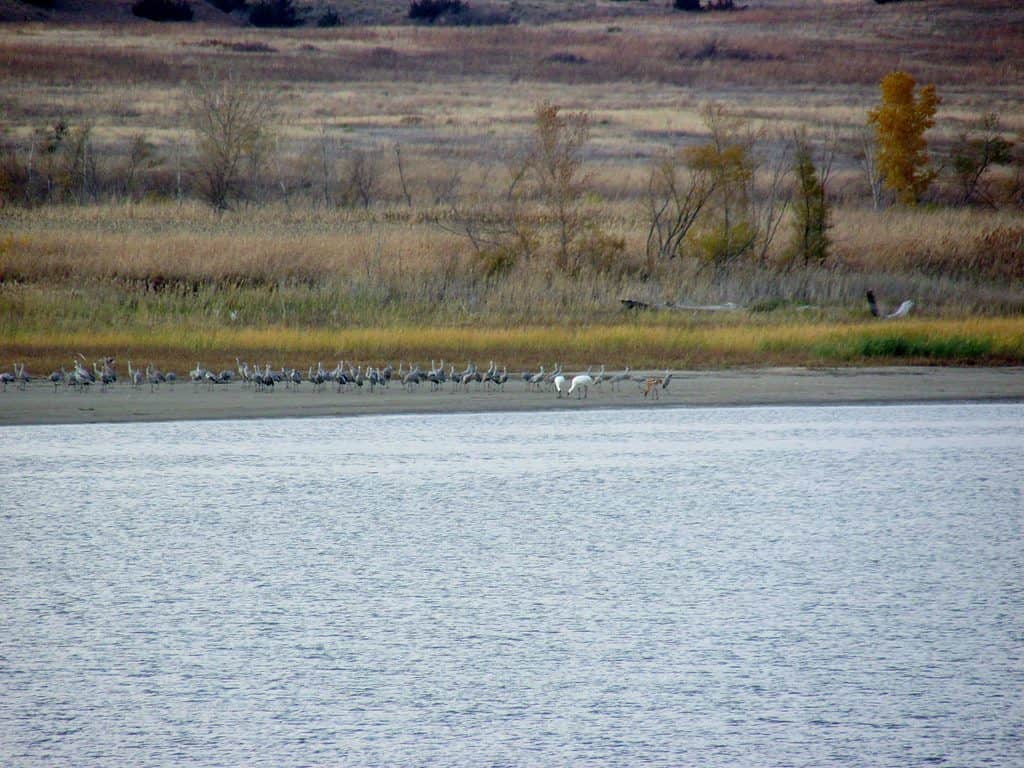Most of the lakes in Kansas are man-made lakes created to manage flood control, water supplies and to help irrigate the miles and miles of crops grown in Kansas. There are 24 public reservoirs that have been built over the years. Smaller lakes and ponds dot the landscape of the state as well providing pockets of habitats for fish, turtles, birds and migrating waterfowl. Many of the bigger reservoirs are around the same size with Milford Lake being the biggest lake in Kansas. The bigger reservoirs in the state are also the deepest lakes although that is not always the case. If you are looking for some of the deeper pools for fishing there are a few lakes that have prime fishing holes. Let’s take a look at the deepest lake in Kansas.
What is the Deepest Lake in Kansas?
The deepest lake in Kansas is tie between Milford Lake and Wilson Lake. The Kansas Department of Wildlife and Parks lists both lakes at 65 feet deep. And it is not like these lakes blew the other lakes out of the water (pun intended). There are several Kansas reservoirs that are 50+ feet deep including El Dorado (60 feet), Melvern (60 feet), Big Hill (60 feet), Cedar Bluff (58 feet), Hillsdale (57 feet), Council Grove (56 feet), Perry (55 feet) and Clinton (55 feet). A couple others are right at the 50-pound mark like Tuttle Creek and Pomona. Honorable mention goes to two others that are at the 49-foot mark, Cheney and Kirwin.
While water levels obviously fluctuate you can see the deepest lake at any given point could change in Kansas. The water levels are quite similar and can change over time. Let’s take a closer look at the two deepest lakes as of this writing, Milford and Wilson.

©Madelyn Hart/Shutterstock.com
Where is Milford Lake?
Milford Lake, or the Milford Reservoir, is located northwest of Junction City, KS, north of Hwy 70. This sprawling reservoir has a surface area of 15,709 acres, created by the Milford Dam on the Republic River. The dam project started in July of 1962 for flood control, water supply and to create a recreational lake for people to enjoy. The lake was completed and dedicated in May of 1968. Milford State Park is on the southeast shore and is a popular place for boating, fishing and camping. There are eight campgrounds to choose from including a few with nice cabins to make your home base during your stay.

©James St. John / flickr – License
How is the Fishing in Milford Lake?
The fishing in Milford Lake is excellent with good sized walleye, largemouth and smallmouth bass, crappie and catfish. The Kansas Department of Wildlife and Parks website lists the best fishing holes on each lake according to the fish you are after. For example, if you want to snag a walleye their advice is, “Target rocky or wind-swept mud banks or along dam with jigs, crankbaits, or bottom bouncers w/ worms.”
Are there any Fishing Records from Milford Lake?
Yes! There are two state fishing records pulled from Milford. While neither fish is more than 10 pounds, they are the biggest fish caught for their species. The biggest smallmouth bass in the state was caught by Frank Evans Jr. on April 4, 2010 while fishing on Milford Lake. His record-breaking bass weighed in at 6.88 pounds and was 21 ½ inches long. The second record is for the biggest Goldeye. One look at a Goldeye and you will understand how they got their name. They are a silvery fish with an oversized golden eye at the front of their heads. The record Goldeye in Kansas was 2.25 pounds and 17 ¾ inches long, caught by Mike Augustine back in June of 1980. Check the park’s website to get the best tips on location (and lucky bait) if you think you can break one of these records!

©Acorns Resort / Flickr – License
Where is Wilson Lake?
Wilson Lake is about 2 ½ hours west of Topeka, KS, just north of Hwy 70. There are several parks and recreation areas on the lake including Wilson State Park that is located in the Smoky Hills. This park provides scenic outcrops, epic mountain bike trails and variety of habitats for wildlife. Across the lake from Wilson State Park is the Lucas Park Recreation Area where you can hike the Rocktown Hiking Trail. Look for rabbits and squirrels scurrying around the red sandstone rock formations. Lucas Park also has an incredible campground with campsites right along the water’s edge!
The Minooka Park Recreation Area also has a campground with sites right on the water. Situated on the south shore you will get amazing sunrise and sunset views on the lake. Can you imagine waking up, brewing a cup of coffee then stepping out of your camper to be greeted by a beautiful pink sunrise! Then head out for some early morning fishing. Sounds like a recipe for the perfect day!

©Kansas City District U.S. Army Corps of Engineers, Public domain, via Wikimedia Commons – License
How is the Fishing in Wilson Lake?
If you want to catch some trophy sized stripers or white bass then Wilson Lake is the place to fish! Want to know where the biggest stripers hang out? The Kansas Wildlife and Parks gives this tip, “Larger fish are relating to deeper water near Lucas campground, mouth of Marshall Cove, and towards the dam.” Try trolling crankbaits, casting/jigging large bucktail jigs, or drifting live shad or sunfish along channel breaks.” While you might not find and striped bass at 65 feet deep, they do prefer the deeper waters.
Are there any Fishing Records on Wilson Lake?
Yes! There are two state fishing records from Wilson Lake including the biggest striper! The biggest striped bass ever caught in Kansas was a 44-pounder caught by Paul Bahr on May 14, 2010. Bahr’s striped bass was 44 inches long (easy to remember 44 pounds and 44 inches!). The second record breaker was a 13.16-pound walleye! The record-breaking walleye was caught by Dustin Ritter on April 17, 1996 and the record still stands today.
How do the Deepest Lakes in Kansas Compare to the Deepest Lake in the US?
When you compare the deepest lakes in Kansas at 65 feet deep to deepest lake in the US there really is no comparison. You’re certainly not going to see a Kansas license plate boasting “Home of the Deepest Lakes”. But a quick look at the many reservoirs in Kansas, all about the same size and deepness, you will find a common thread of beautiful clear waters, rocky shorelines and beautiful sunsets. That being said, the deepest lake in the US also has beautiful clear waters…really clear waters. Crater Lake in Oregon is the deepest lake in the US. At the deepest point it is 1,949 feet deep!
How is the Fishing in Crater Lake?
There are many restrictions on Crater Lake to preserve the natural waters and to prevent invasive species, but you can fish on Crater Lake. There were no native fish in the lake due to the fact that the lake was formed entirely from rain and snow melt. However, over the years several different fish species were introduced into the lake with rainbow trout and kokanee salmon being the ones that have thrived. There are no state fishing records from Crater Lake, but you can imagine how fresh a kokanee salmon from one of the cleanest lakes on the planet would taste!
Up Next
- Best Lakes for Hunting and Fishing in Kansas
- The 5 Best Places to Camp in Kansas this Summer
- The 15 Deepest Lakes in the United States
The post Discover the Deepest Lake in Kansas appeared first on AZ Animals.
from Animal News, Facts, Rankings, and More! - AZ Animals https://ift.tt/OAgj6kv